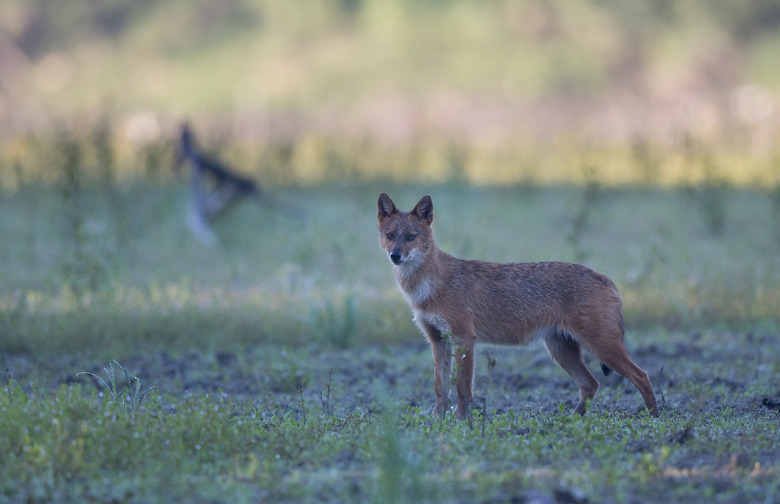Characteristics Of A Jackal
On first sight, a jackal could easily be mistaken for a wolf or perhaps a dog, but while these wild carnivores are related to the wolf family, they're a species to themselves. Living across a variety of habitats on continents such as Asia and Africa, the jackal has entered into the folklore of peoples around the world, thanks to its cunning and fearsome howl. The culture of Ancient Egypt, for example, associated the jackal with its god of death, Anubis.
Common Jackal Appearance
Common Jackal Appearance
The common jackal can be found across parts of Africa, as well as in Asia, where it has been given the name the Asiatic jackal. Another name for this species, thanks to its sandy fur, is the golden jackal, though its fur is generally a reddish-gray in winter. The common jackal's face is brown or red with white shades across its cheeks and throat. Common jackals are a little smaller than wolves and are recognizable by their bushy tails. Asiatic jackals are characterized by their ears, which are slightly smaller than African common jackals.
Appearance of Other Varieties
Appearance of Other Varieties
Other varieties of the jackal include the black-backed jackal, often spotted in parts of East Africa. This species of jackal is characterized by the black hair that runs along its back and its tendency to appear more during the day than other varieties of these animals, which are nocturnal. The side-striped jackal has a white-tipped tail in contrast to the black tip of other jackal varieties, and its body is covered with black and white stripes, which give this jackal its name.
Habitat
Habitat
Jackals are able to survive in a range of dry conditions and, as a result, these creatures can be found in environments such as deserts and mountains. Black-backed jackals are often found in forests or savannas, while side-backed jackals commonly live in wetter areas, such as marshes and wet savannas, as well as in the bush-land of Africa. The common jackal makes its home amid grasslands and savannas.
Diet
Diet
Natural scavengers, jackals feed opportunistically, hunting for small animals such as hares or even larger creatures such as sheep and eating plants and berries. A jackal's diet varies according to the season. In the late summer, they tend to hunt gazelles and reptiles, since the fruit and berries they consume earlier in the year are harder to find.
Jackal Reproduction
Jackal Reproduction
Jackals mate for life and the female gives birth to a litter that generally contains between three and six pups. These pups are looked after by their parents until they're ready to leave their dens at the age of eight months. During this time, the adult jackals switch dens regularly to avoid predators. Even after young jackals have ventured out on their own, they sometimes return to assist their parents in raising new litters.
References
Cite This Article
MLA
Fuller, Simon. "Characteristics Of A Jackal" sciencing.com, https://www.sciencing.com/characteristics-jackal-8690175/. 22 November 2019.
APA
Fuller, Simon. (2019, November 22). Characteristics Of A Jackal. sciencing.com. Retrieved from https://www.sciencing.com/characteristics-jackal-8690175/
Chicago
Fuller, Simon. Characteristics Of A Jackal last modified March 24, 2022. https://www.sciencing.com/characteristics-jackal-8690175/
